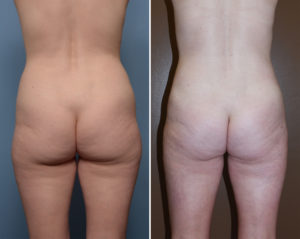The removal of unwanted fat through liposuction techniques is effective but has as its main complications that of irregularities and asymmetries of body contours. While taking down the size of fat collections, it does not always result in the desired body contours or a show of the underlying muscular detail. This has lead to a liposuction concept known as sculpting or liposculpture. What is liposculpture and is it really different? Is it a better at achieving natural body contours and a more attractive body shape? Who is it best used on?
Liposculpture moves beyond the removal of just localized areas of too much body fat to a more artistic approach to fat removal. Instead of using large bore cannulas which can indiscriminately remove fat rapidly and creates large diameter internal tunnels through the fat, smaller size cannulas are used. These tools are more selective about how much and where fat is removed. Smaller cannulas may also be combined powered liposuction equipment such as oscillating, ultrasonic and laser-assisted devices. Whether these energy-driven devices are more effective at liposculpture is a matter of debate.


While liposculpture sounds appealing, it is not a method that is best for many liposuction patients. The most common liposuction patient has larger amounts of fat on the abdomen, waistline, thighs and arms. In these areas there are two distinct fat layers, superficial and deep. Extraction from the deeper layers is needed and should be the first layer that the cannula enters. Treating the superficial layers as well, while improving the amount of contour reduction, will increase the risks exponentially of surface contour irregularities. The abdomen, arms and inner thighs are particularly at risk for this problem with superficial liposculpture. The quality of the skin, its thickness and elasticity must be assessed to determine if it is wise to attempt removal of fat right under the skin.
While slick marketing and pictures of models attempt to attract prospective patients for so-called liposculpture surgery, it is important to remember that traditional liposuction methods with solely deep fat removal will satisfy most patients. Liposculture techniques should be applied judiciously and applied to areas that are best served by them. It is a liposuction technique that takes into account the anatomy of the fat and the contouring goals and not a method that replaces traditional liposuction for many body areas.
Dr. Barry Eppley
Indianapolis, Indiana


